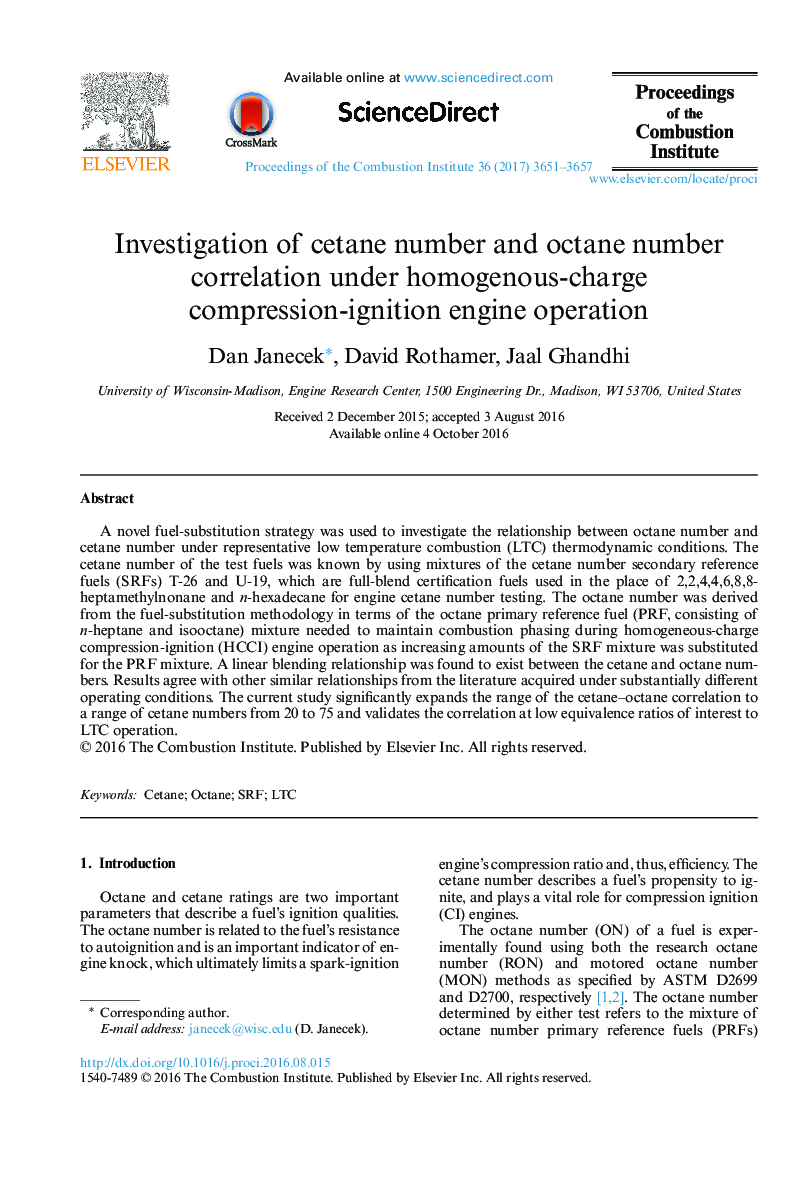| Article ID | Journal | Published Year | Pages | File Type |
|---|---|---|---|---|
| 4915421 | Proceedings of the Combustion Institute | 2017 | 7 Pages |
A novel fuel-substitution strategy was used to investigate the relationship between octane number and cetane number under representative low temperature combustion (LTC) thermodynamic conditions. The cetane number of the test fuels was known by using mixtures of the cetane number secondary reference fuels (SRFs) T-26 and U-19, which are full-blend certification fuels used in the place of 2,2,4,4,6,8,8-heptamethylnonane and n-hexadecane for engine cetane number testing. The octane number was derived from the fuel-substitution methodology in terms of the octane primary reference fuel (PRF, consisting of n-heptane and isooctane) mixture needed to maintain combustion phasing during homogeneous-charge compression-ignition (HCCI) engine operation as increasing amounts of the SRF mixture was substituted for the PRF mixture. A linear blending relationship was found to exist between the cetane and octane numbers. Results agree with other similar relationships from the literature acquired under substantially different operating conditions. The current study significantly expands the range of the cetane–octane correlation to a range of cetane numbers from 20 to 75 and validates the correlation at low equivalence ratios of interest to LTC operation.
